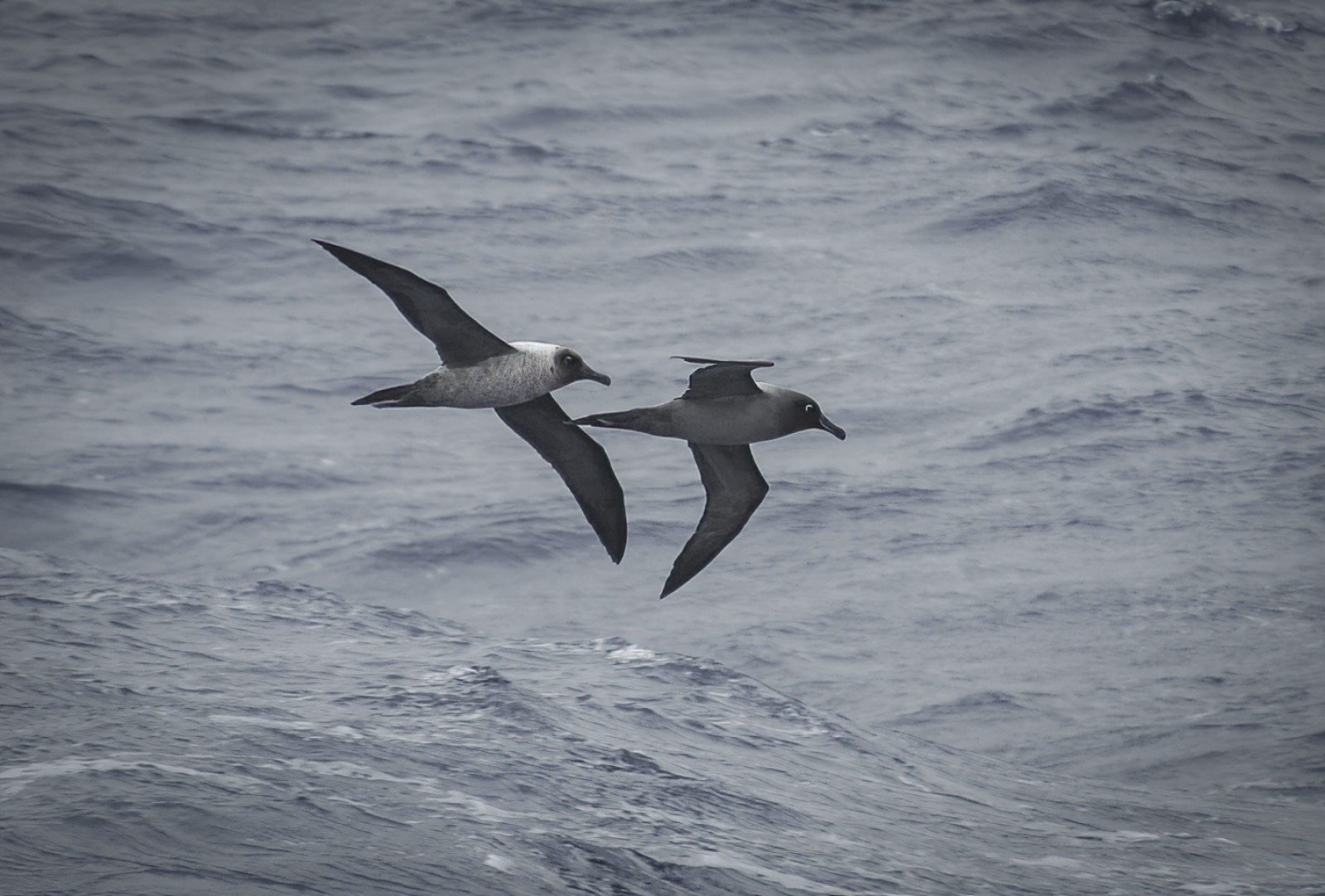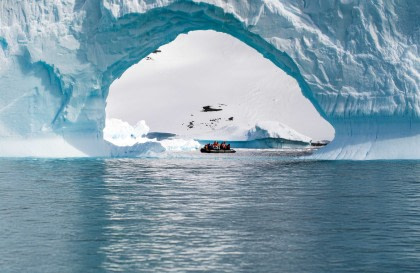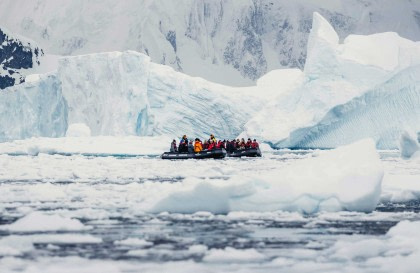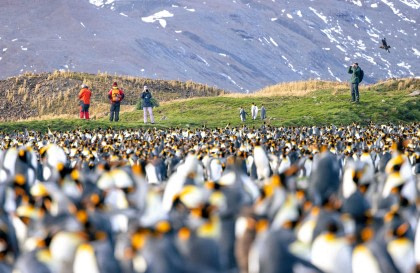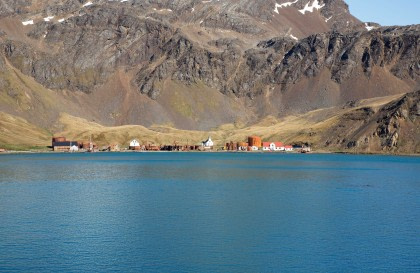33 Antarctic bird species facts, places, and pictures
Of the countless compelling reasons people travel to Antarctica and the sub-Antarctic, bird life remains among the most beloved.
Even if you don’t include penguins in the mix, these wildlife-rich Antarctic regions offer some of the best hotspots for birdwatching on the planet, supporting a kaleidoscope of endemic birds and a vibrantly diverse cast of non-native species.
This article is meant to complement our entry on Arctic birds, and is intended merely as a survey of the more common bird and seabird species we encounter. To keep the number manageable, we won’t detail the eight penguin species you might see on an Antarctica cruise here. In this entry we’ll mostly cover birds that can fly.
Sorry, penguins. We still love you.
1. Wandering albatross
Claiming the largest wingspan of any bird on the planet at an impressive 3.5 meters (11.5 feet), wandering albatrosses can soar for enormous distances without so much as a flap of their wings. This enables them to use less energy in flight than at rest, something not even the most advanced airplane can claim.
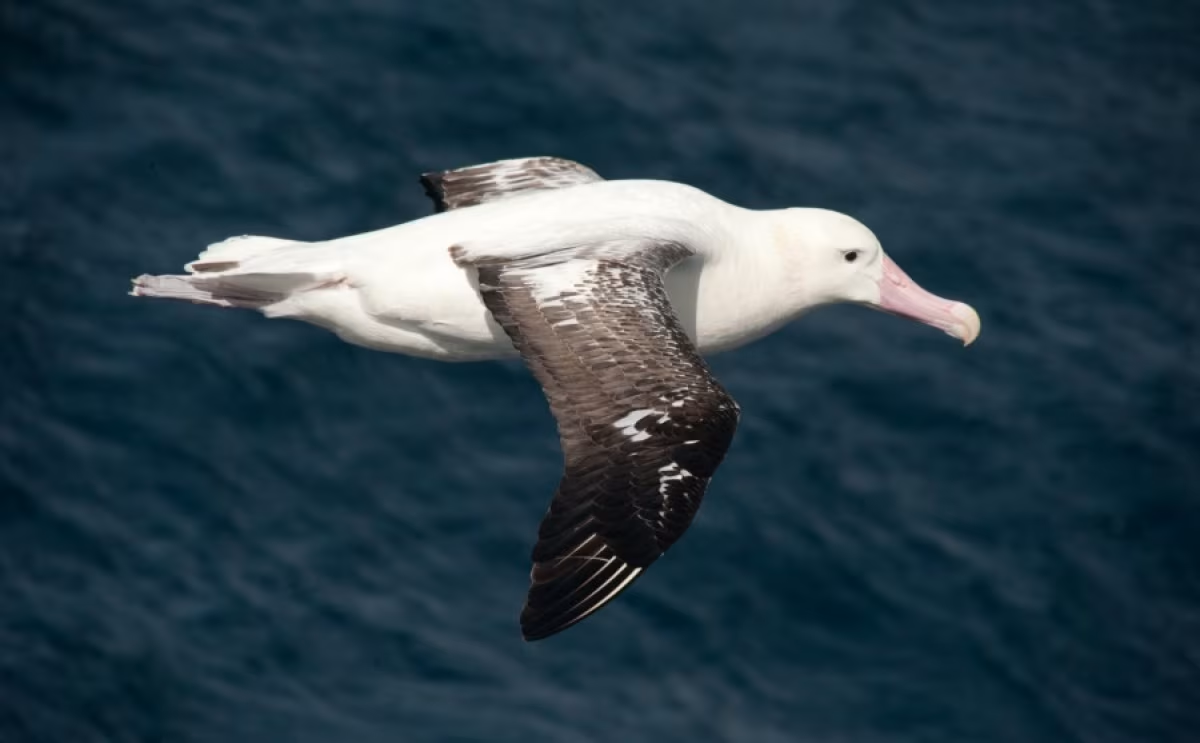
Picture by Erwin Vermeulen
2. Southern royal albatross
These magisterially named seabirds are second only to wandering albatrosses in terms of size, with wingspans expanding to around three meters (9.8 feet). We sometimes see southern royal albatrosses during sea legs as well as around Campbell Island during our Ross Sea voyages.

Picture by Fred van Olphen
3. Tristan albatross
Even expert birdwatchers sometimes confuse Tristan albatrosses for wandering albatrosses, as they look similar from a distance and are indeed a subspecies of the latter seabird. Tristan albatrosses, however, have a slightly darker back and are smaller. They are endemic to the Tristan da Cunha archipelago, especially Gough Island.
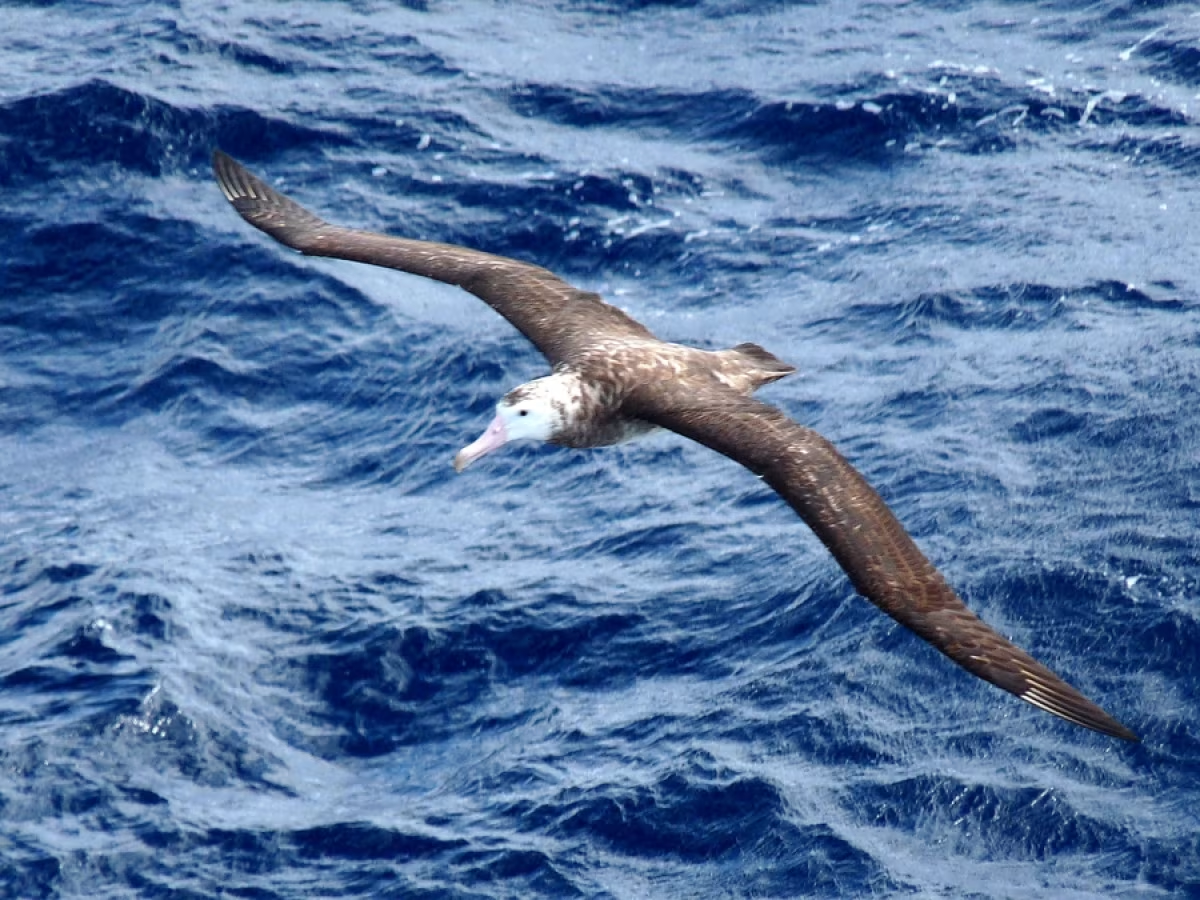
Picture by Michael Clarke [CC BY-SA 2.0], via Wikimedia Commons
4. Black-browed albatross
Like wandering albatrosses, black-browed albatrosses use little energy in flight. In fact, black-browed albatrosses barely get their hearts beating above resting rate while flying. They are known for their distinct dark eyes, and can be found mostly in South Georgia and the Falklands.
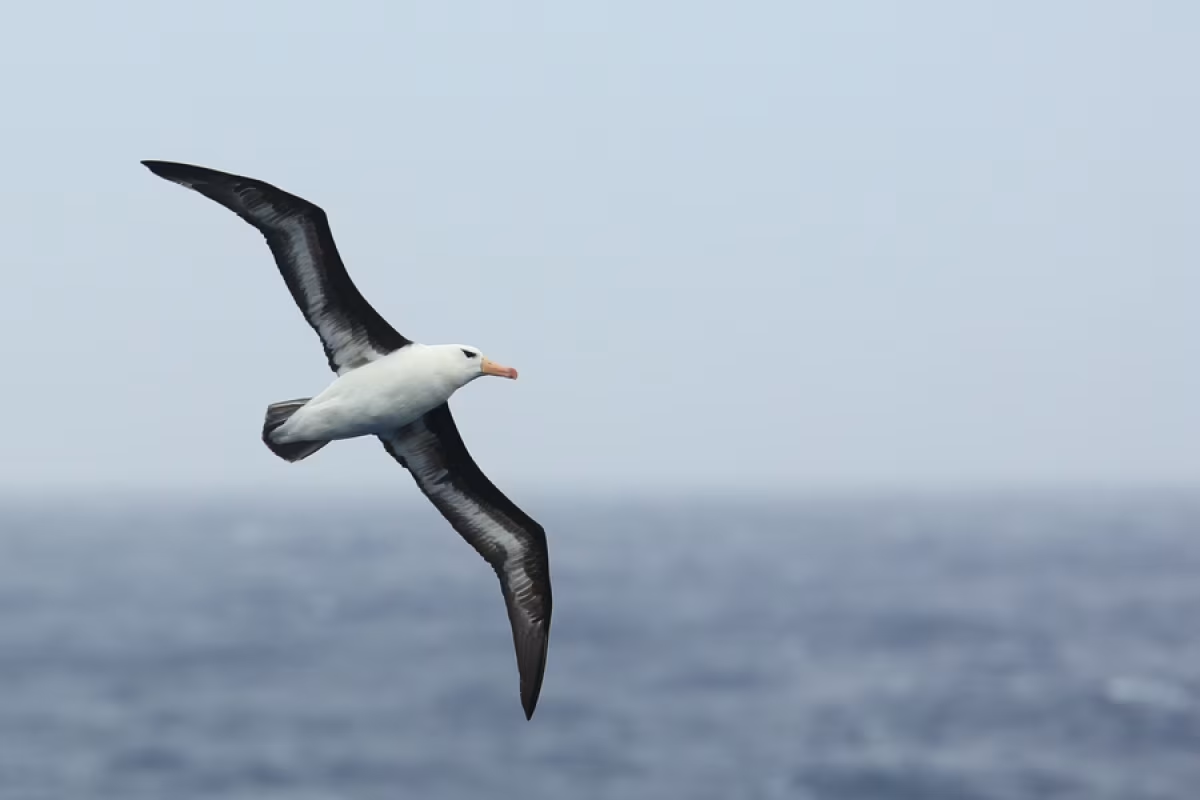
Picture by Bruce Robinson
5. Light-mantled albatross
These fair-feathered albatrosses are similarly efficient fliers, just like the rest of their species. And also like other albatrosses, light-mantled albatrosses have glands above their nasal passages that produce a saline solution to help these birds expel excess sea salt taken in while feeding.
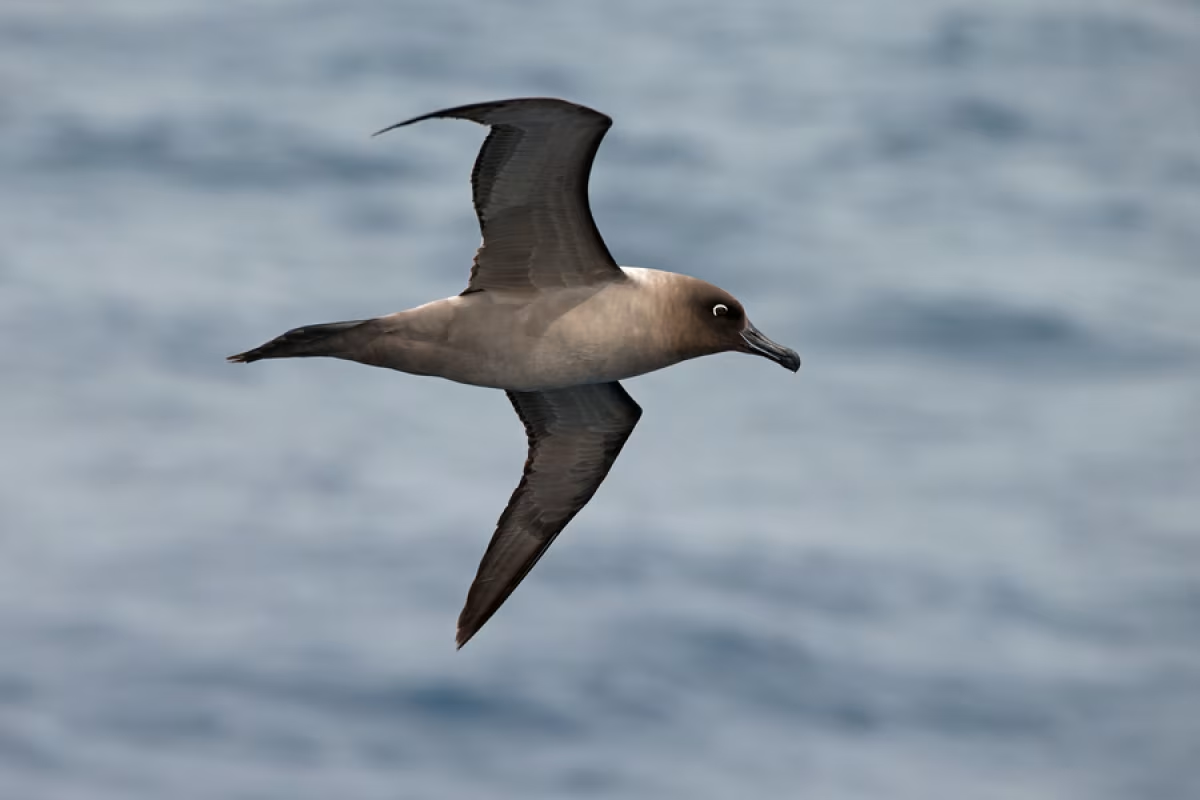
Picture by Mike Watson - BirdQuest
6. Antarctic petrel
Earth´s southernmost breeding bird, Antarctic petrels can also be seen as far north as New Zealand and Australia during winter months. Petrels in general appear to run over the water before flight, which is how they got their name, alluding to the water-walking Saint Peter.
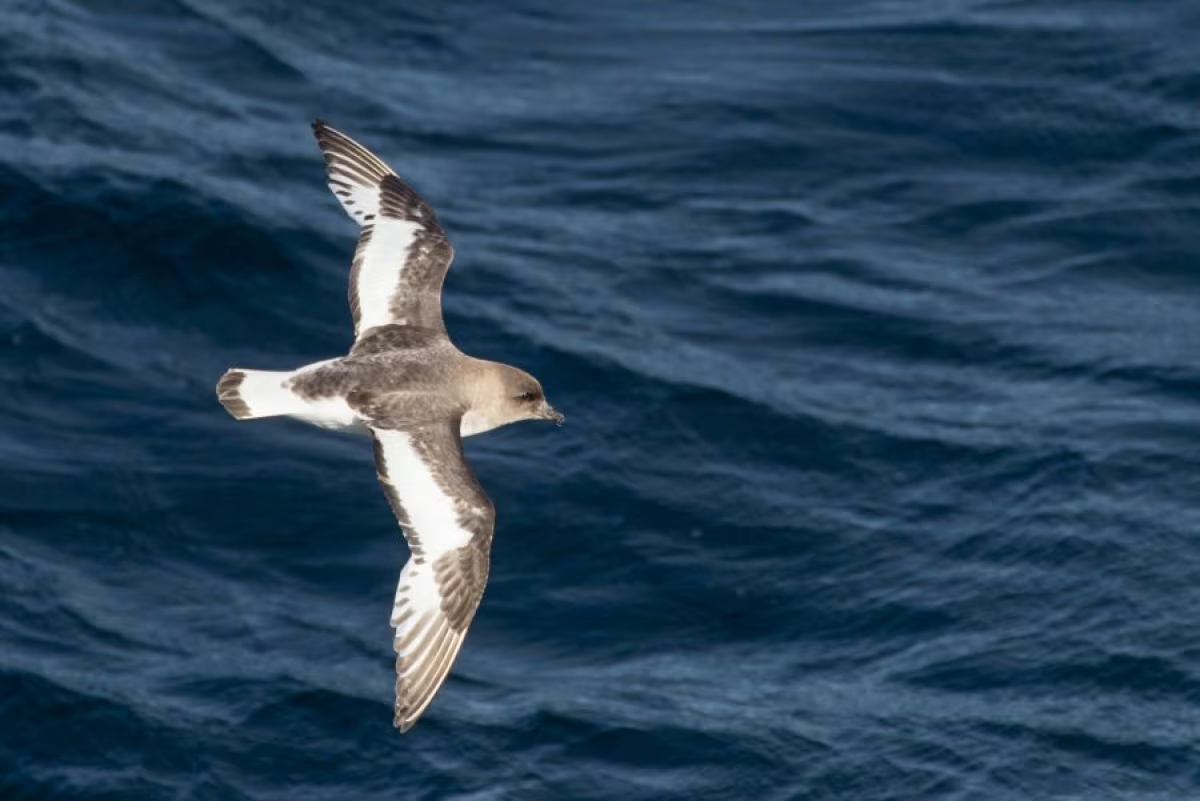
Picture by Rolf Stange
7. Snow petrel
These snow-white seabirds are the second southernmost breeding bird in the world, one of only three birds that nest on Antarctica and its nearby islands. (The others are south polar skuas and emperor penguins.)
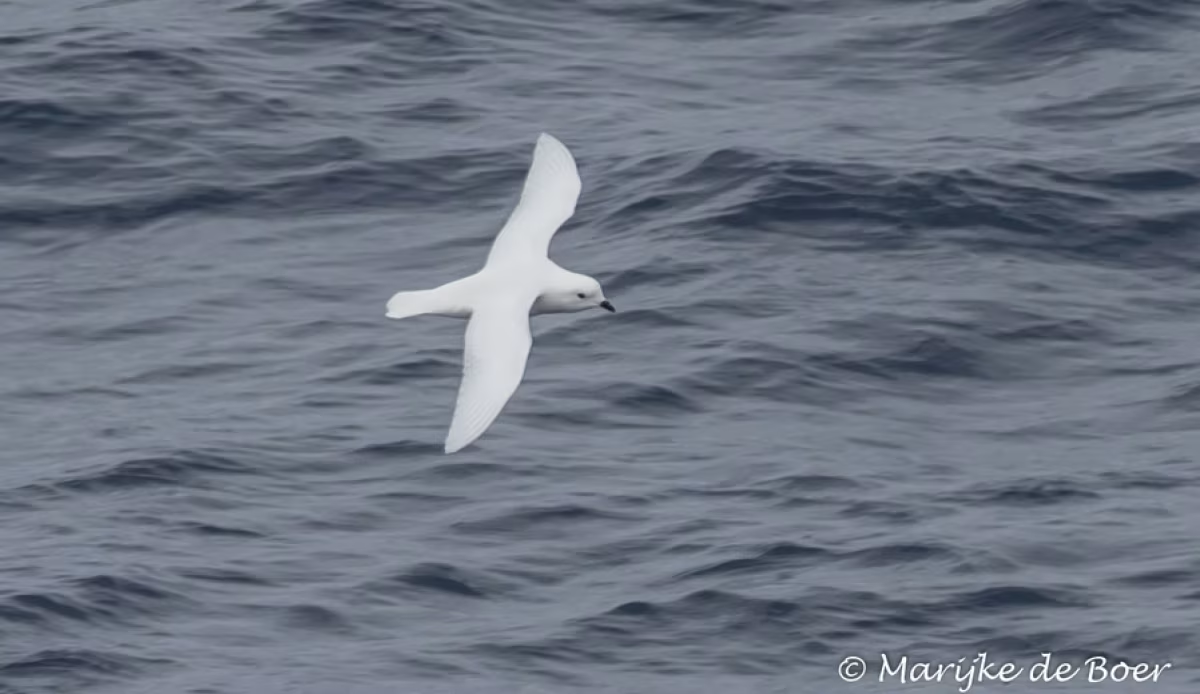
Picture by Marijke de Boer
8. Blue petrel
Blue petrels are prime examples of pelagic birds, staying at sea for most of their lives and coming to shore only to breed. These seabirds are often seen in flocks that include multiple species of prion, and we mainly encounter them in the Drake Passage and the Scotia Sea, as far south as the northern ranges of the Antarctic Peninsula.
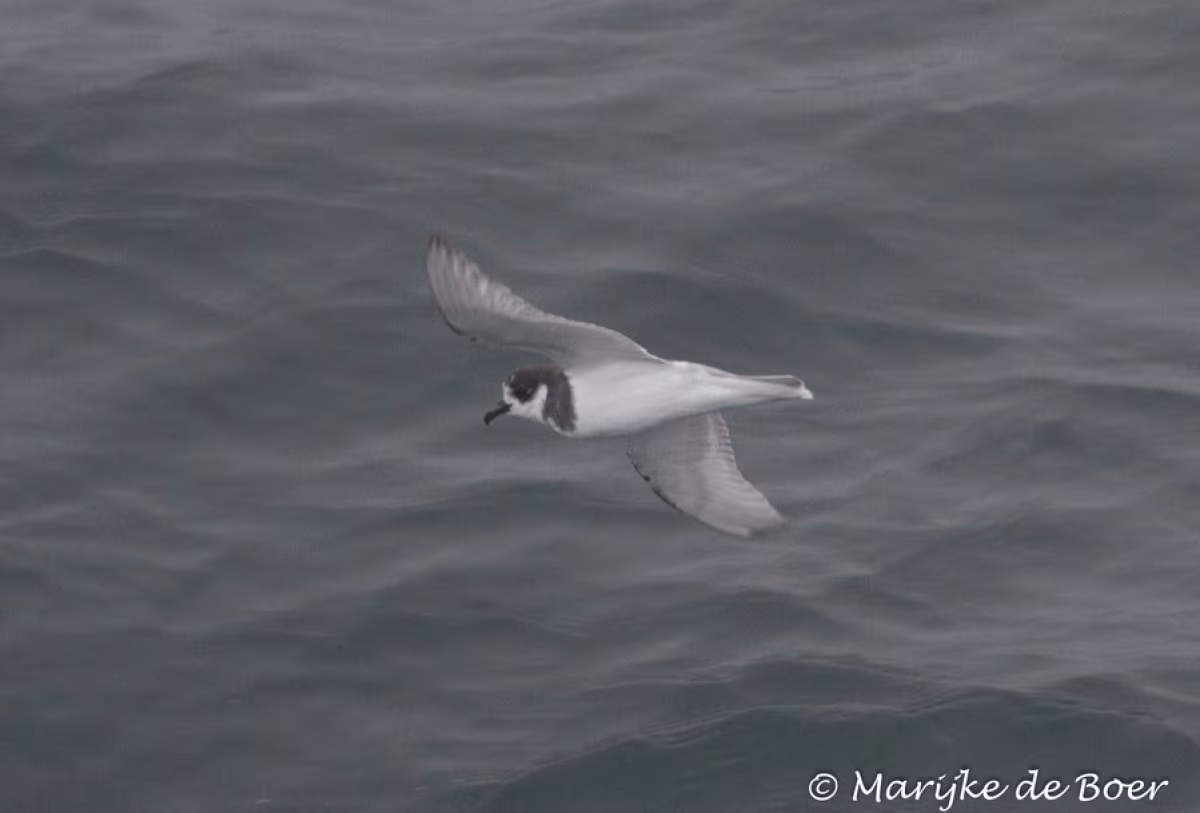
Picture by Marijke de Boer
9. Black-bellied storm petrel
In former days, it was thought the appearance of storm petrels (a major family of petrel) prophesied a storm. For this reason, they’ve gone by many nicknames: Mother Carey’s chickens, a slang for the Virgin Mary; birds of the devil; water-witches; and satanites, among others. We most often see the black-bellied subspecies of storm petrel, typically around South Georgia.
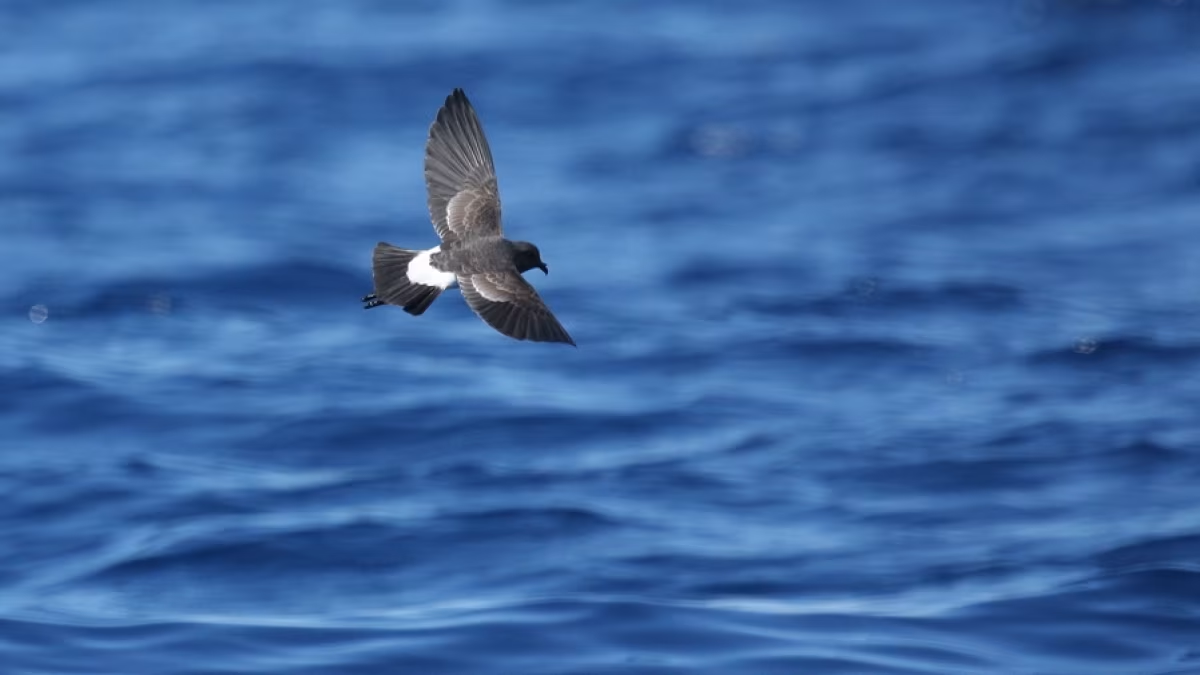
Picture by Tim Lenz [CC BY 2.0], via Wikimedia Commons
10. Wilson’s storm petrel
The smallest bird to breed in Antarctica (or warm-bodied creature at all, for that matter), Wilson’s storm petrels smartly avoid the buffeting winds of a storm by flying in the troughs of waves. They are named after Scottish-American naturalist Alexander Wilson, dubbed the “Father of American Ornithology.”
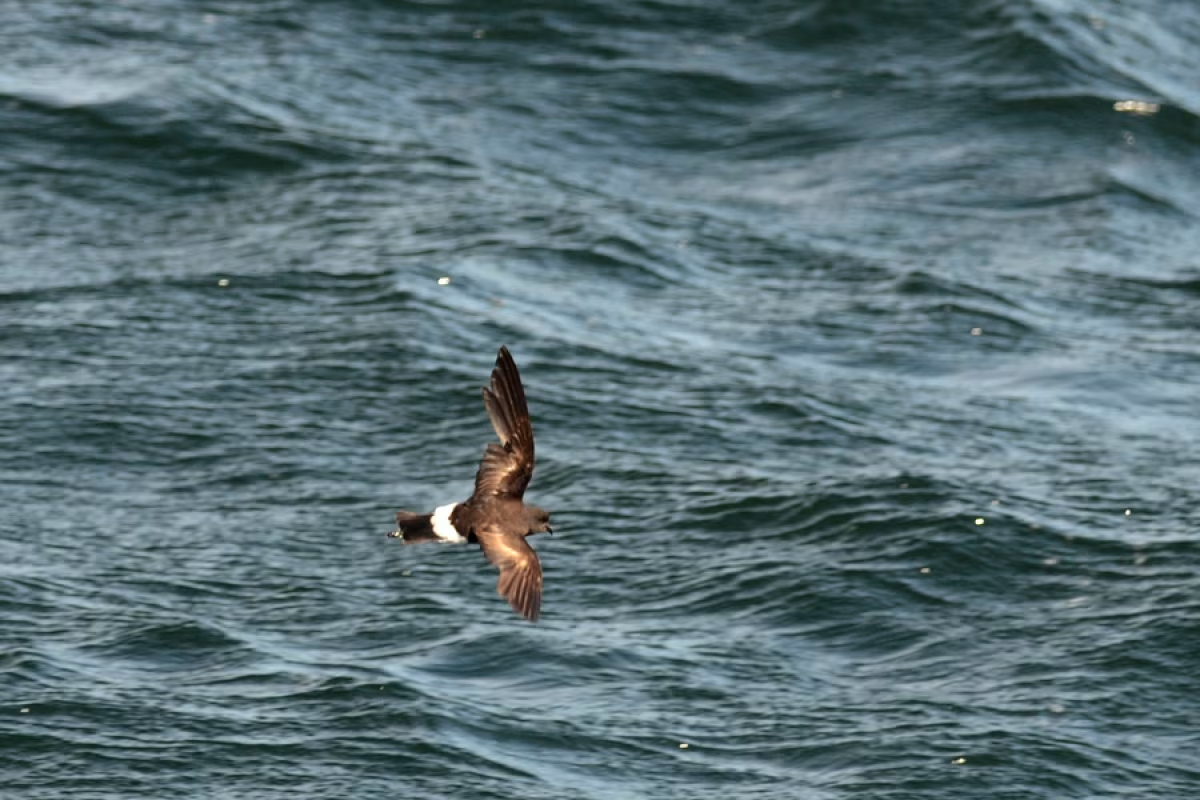
Picture by Laurens Steijn
11. Giant petrel
These birds are the only members of the family Procellariidae that have legs strong enough to walk about on land. Giant petrels fall into two easily identifiable groups: Southern giant petrels have a pale green beak, while northern giant petrels have a beak of reddish-pink.
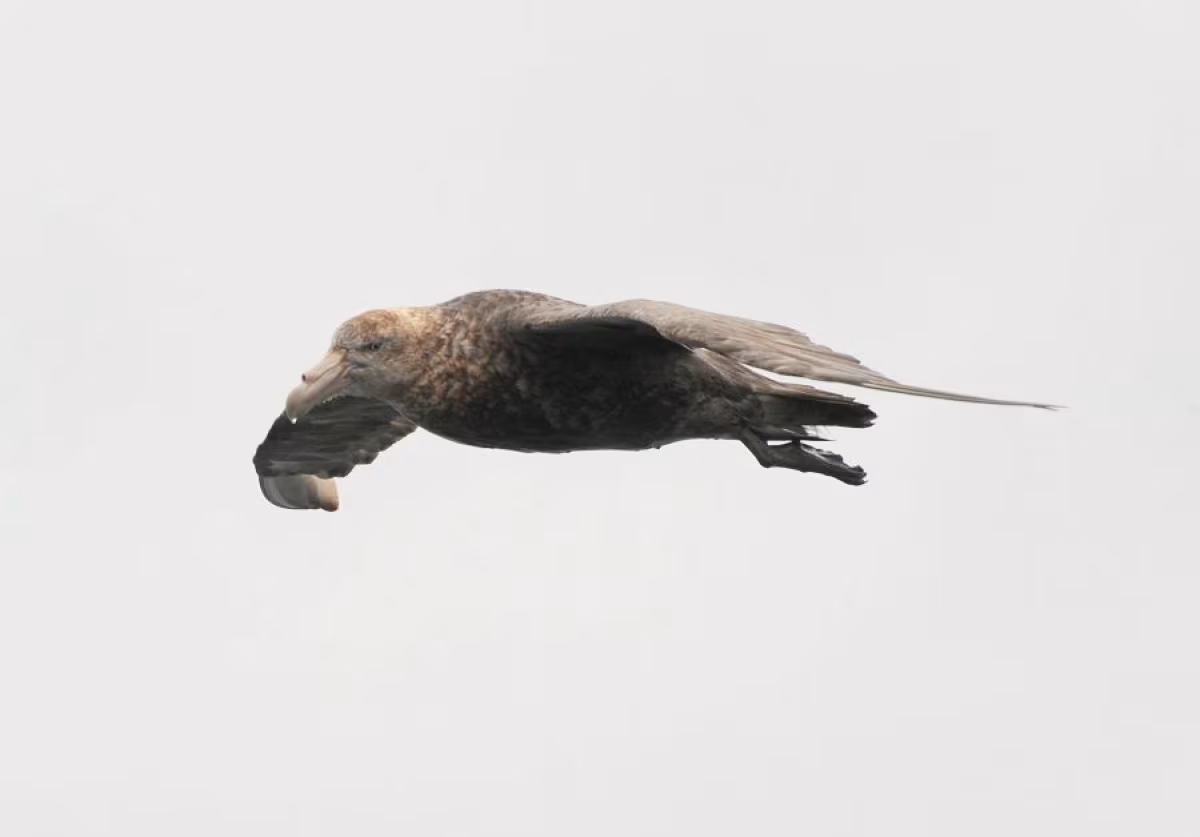
Picture by Siegfried Woldhek
12. South Georgia diving petrel
We usually spot South Georgia diving petrels, not surprisingly, around the coastlines of South Georgia, though vagrants have also been recorded in the Falklands. Like the common diving petrel described below, these birds are quite small and resemble auks.
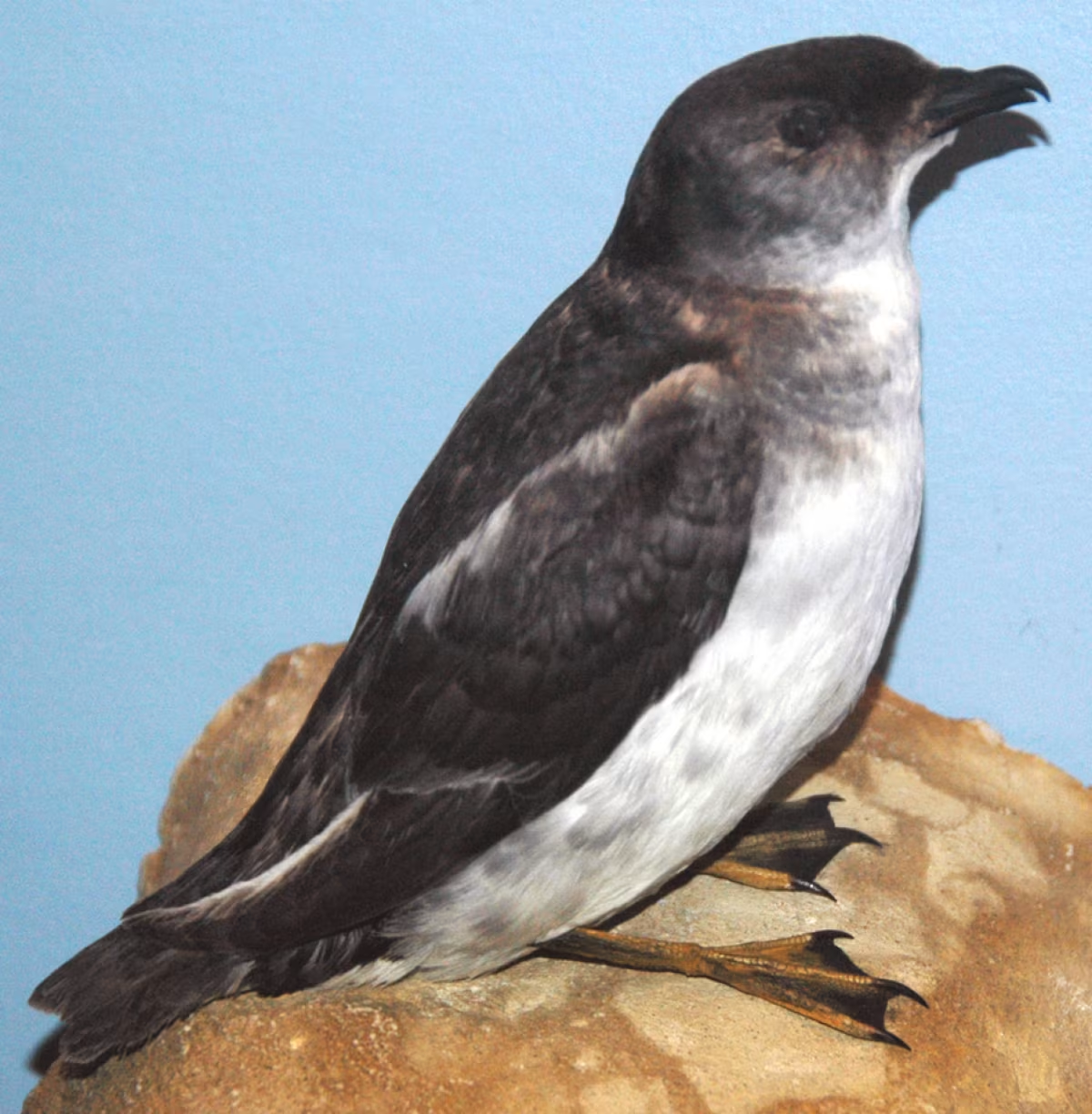
Picture by James St. John [CC BY 2.0], via Wikimedia Commons
13. Common diving petrel
Almost identical to South Georgia diving petrels are common diving petrels, distinguished by their brown inner web primary feathers. (South Georgia diving petrels have light inner web feathers.) These birds are also known as smaller diving petrels or just diving petrels. We encounter these small, plump, auk-like seabirds in the islands of South Georgia and sometimes south of New Zealand.
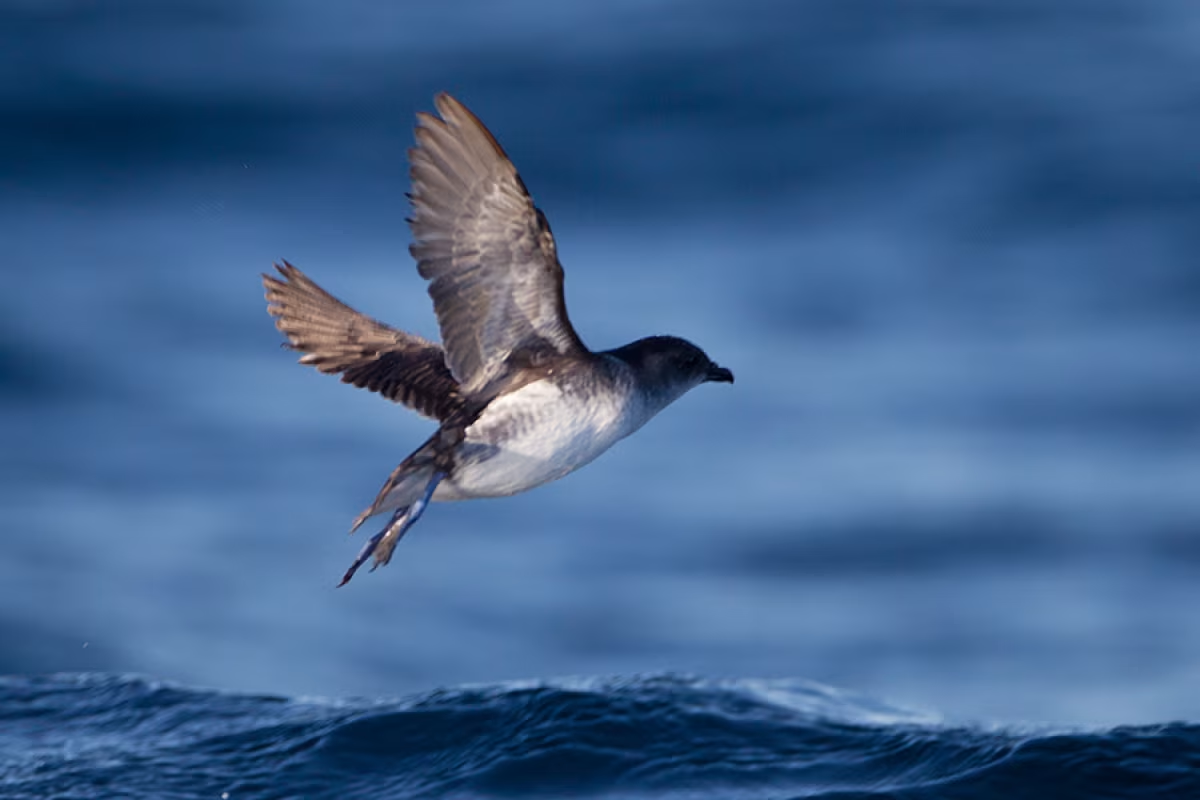
Picture by JJ Harrison [CC BY-SA 3.0], via Wikimedia Commons
14. Magellanic diving petrel
Black above, white below, and as similar to auks as the previous two petrels, Magellanic diving petrels nonetheless are the only seabird species with sharp facial patterns and white fringes along their uppermost feathers. They measure about 20 cm (7.9 inches) long.

Picture by Special Collections of the University of Amsterdam [Public domain], via Wikimedia Commons
15. White-chinned petrel
These large, light-billed shearwaters are also known as Cape hens, breeding in South Georgia, Campbell Island, and to a lesser degree the Falklands. As members of the order Procellariiformes, they produce stomach oil they can spray from their mouths as a defense against predators.
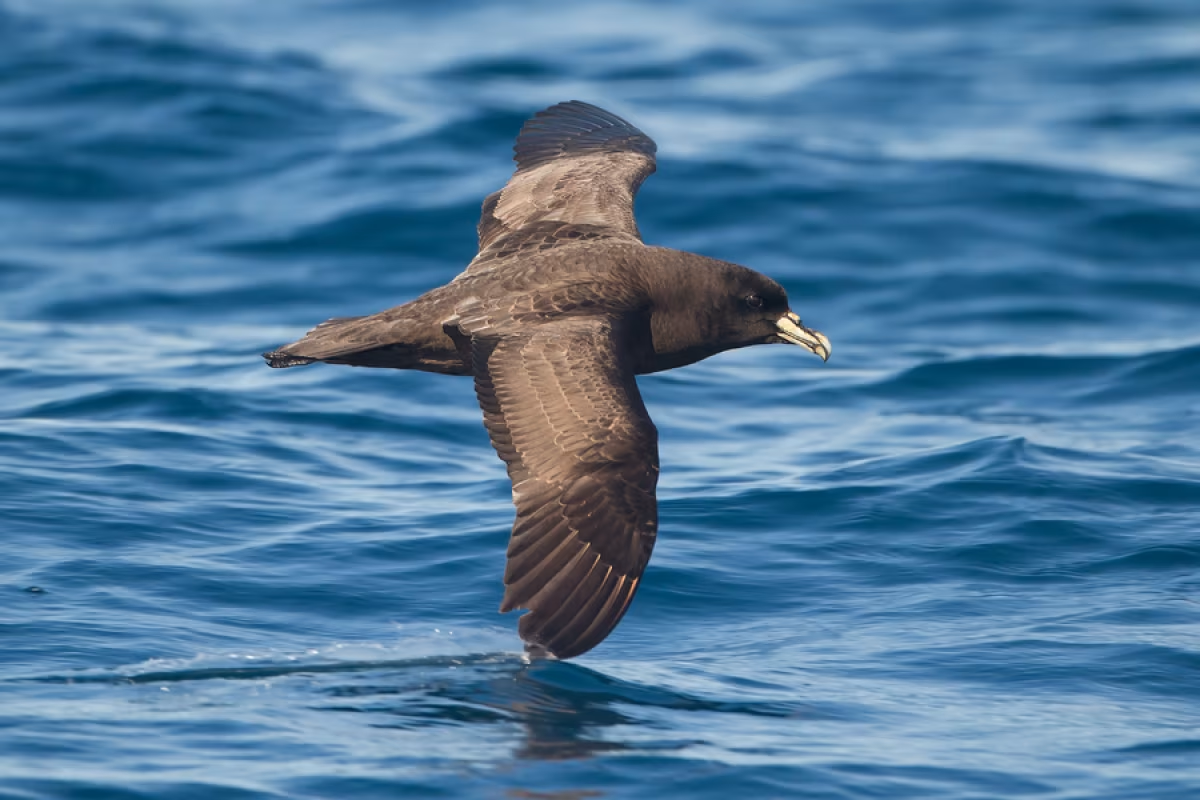
Picture by JJ Harrison [CC BY-SA 3.0], via Wikimedia Commons
16. Great shearwater
Possibly allied with sooty shearwaters in terms of genetics, great shearwaters are sometimes seen around the Tristan da Cunha chain. These birds eat squid and fish, often noisily following fishing boats to fight for a meal, and are known to be very talkative. Only late in the season do we also see great shearwaters between the Falklands and South Georgia.
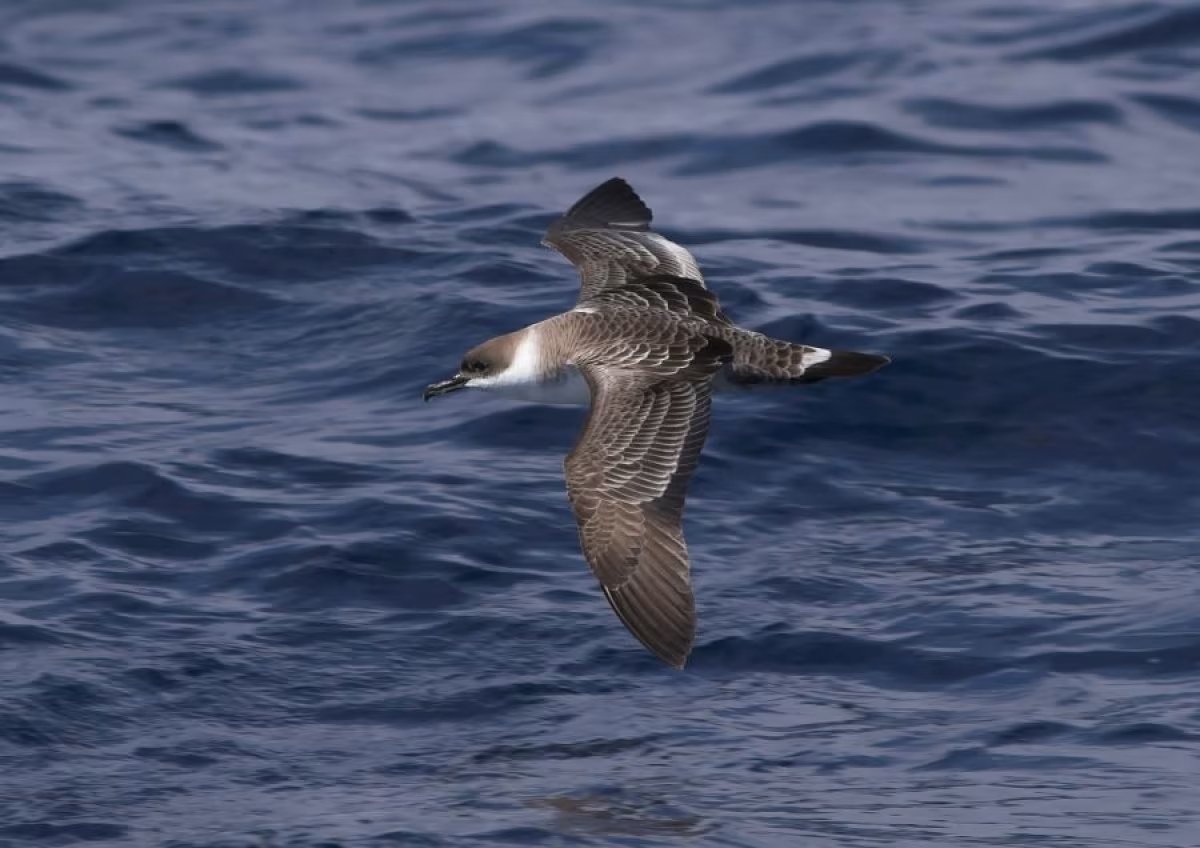
Picture by Troels Jacobsen
17. Sooty shearwater
Smaller than great shearwaters are sooty shearwaters, which we most often spot in the Falklands and around Tierra del Fuego. Daphne du Maurier and Alfred Hitchcock received inspiration for their respective story and film, The Birds, from a reported incident of thousands of sooty shearwaters flying into objects and dying in the streets in North Monterey Bay, California, on August 18, 1961.
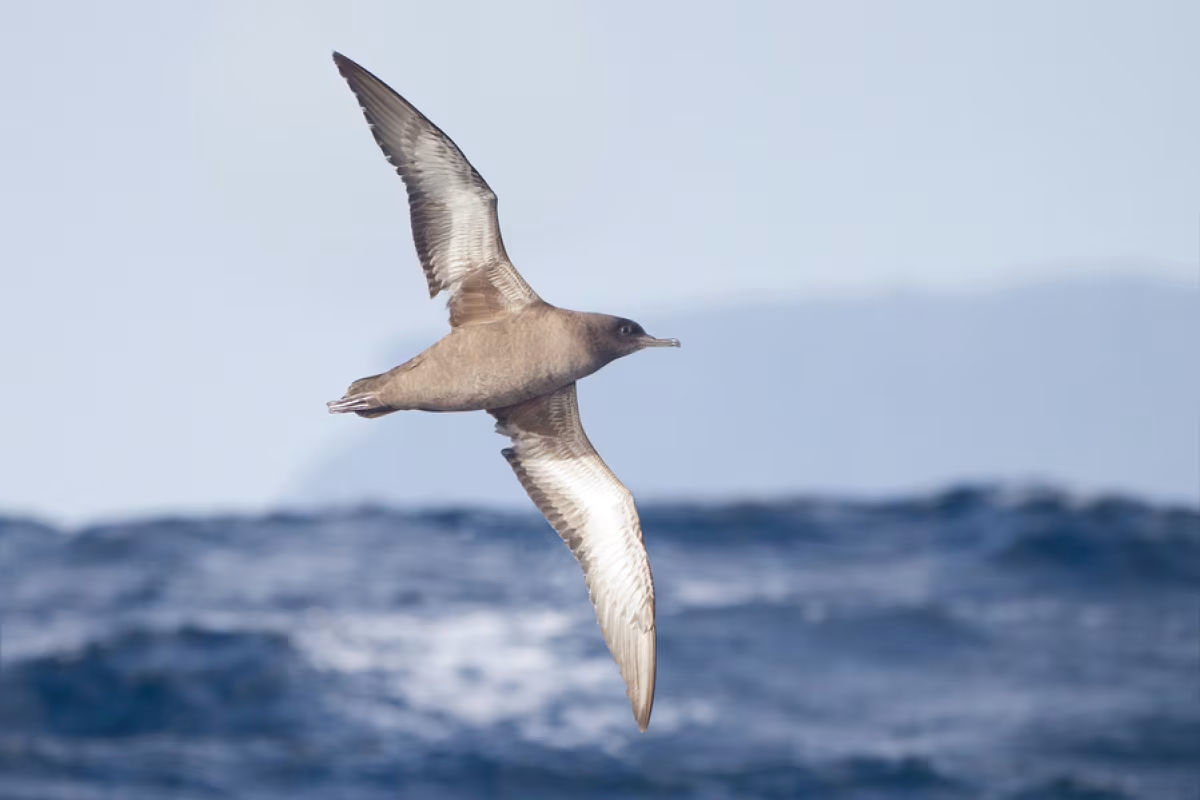
Picture by JJ Harrison [CC BY-SA 3.0], via Wikimedia Commons
18. Southern fulmar
Southern fulmars also go by the names Antarctic fulmar and silver-grey fulmar, and are cliff-nesting birds we most often meet around the South Sandwich Islands, South Shetlands, South Orkneys, and other nearby Antarctic islands. These seabirds tend to gather in flocks with Cape petrels, hunting in krill concentrations around fishing and whaling ships.
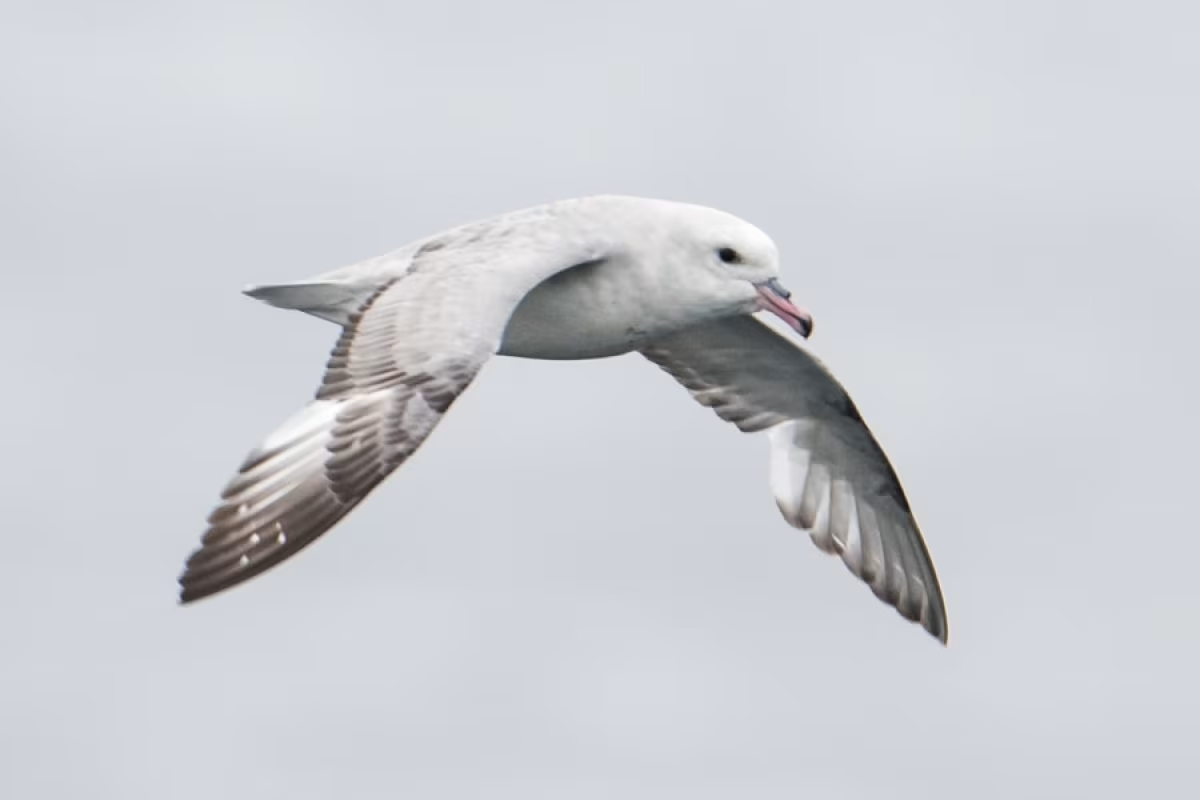
Picture by Meike Sjoer
19. Antarctic prion
These are the largest birds of the prion species, though they’re in fact part of a genus of small Southern Ocean petrels, and are alternately named dove prions. They may also go by the name “whale birds,” because Antarctic prions like to sift the water for tiny crustaceans after the habit of baleen whales. Like southern fulmars, these seabirds are seen in the islands near Antarctica and the sub-Antarctic chain of South Georgia.
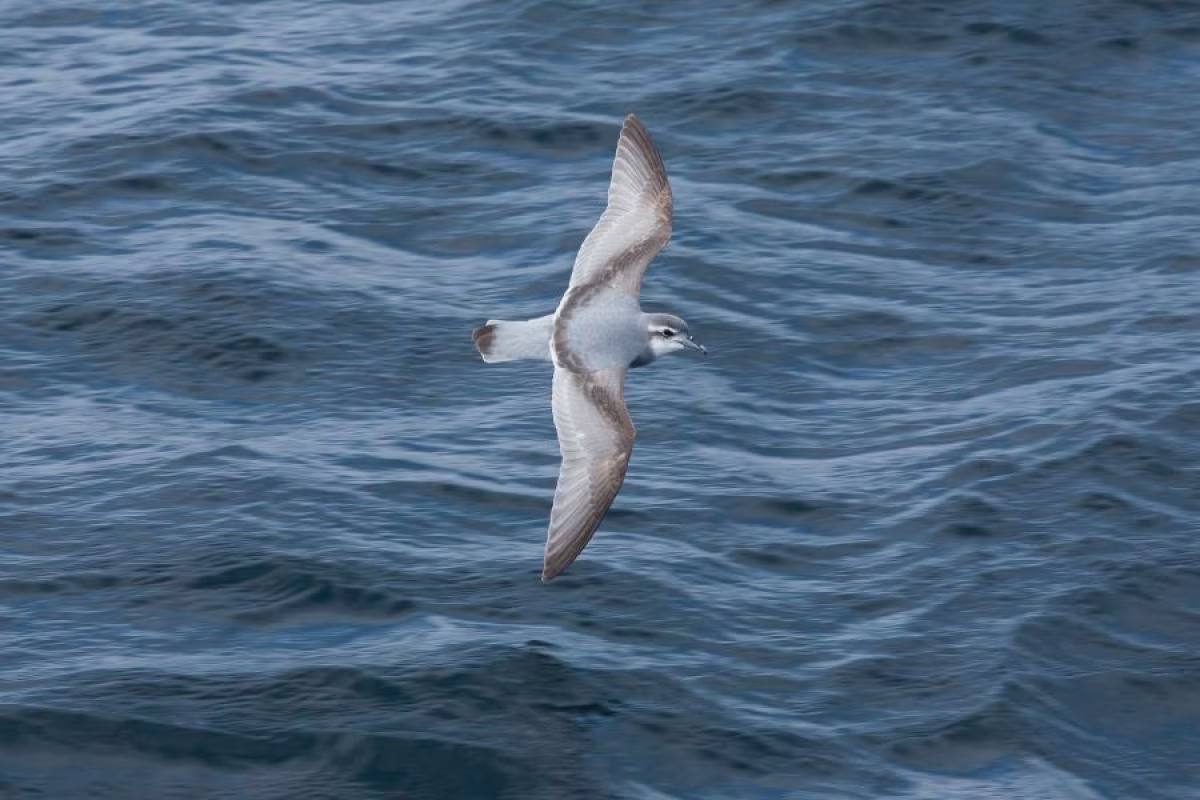
Picture by Troels Jacobsen
20. Slender-billed prion
Known also as thin-billed prions, slender-billed prions are seabirds of the southern oceans that have a highly robust population estimated to be around seven million. They survive on zooplankton, filtering it through their “saw-like” bill, which is the origin of their species name from the Greek prion.
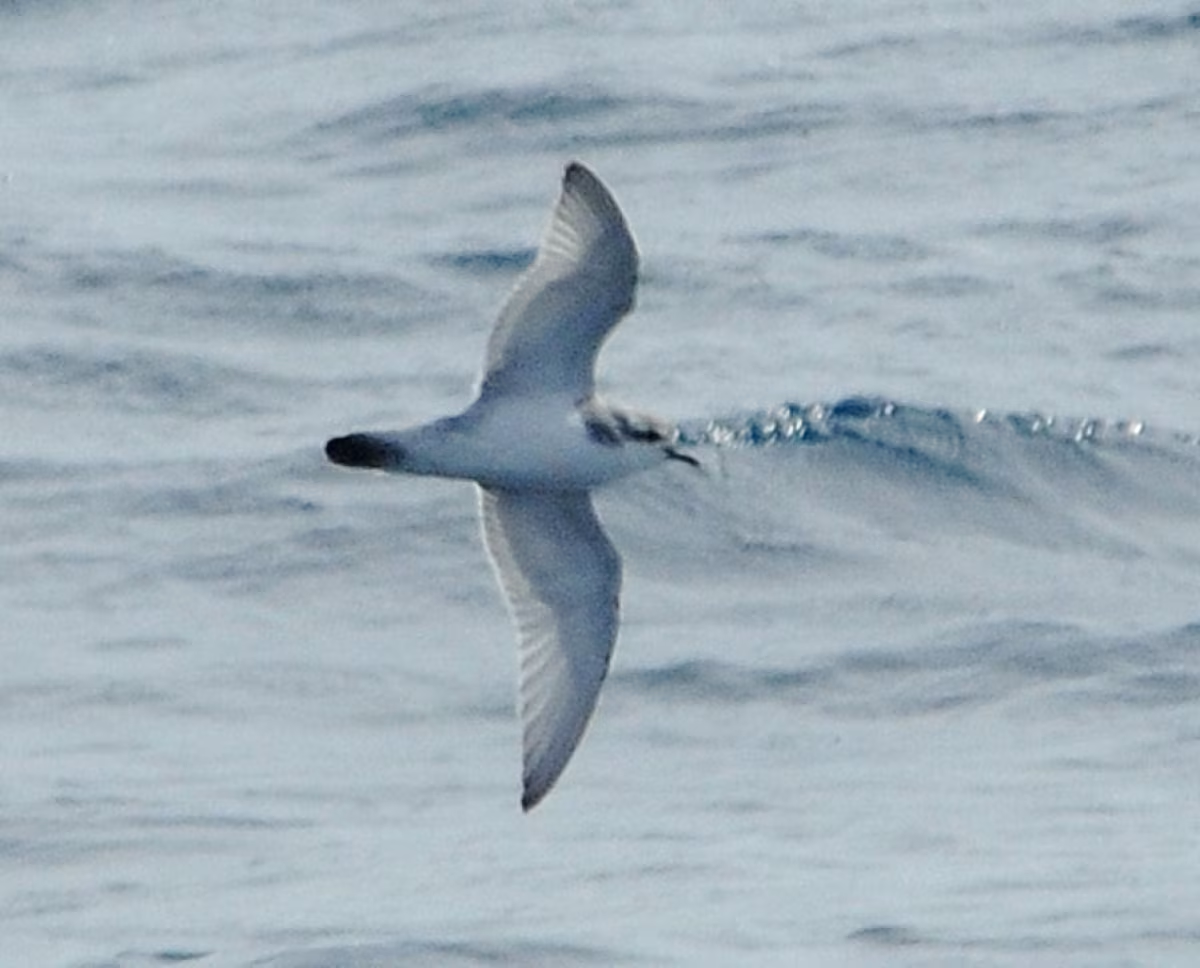
Picture by Joshua Stone [CC BY-SA 4.0], via Wikimedia Commons
21. Fairy prion
Fairy prions are seen throughout the coasts and oceans of the Southern Hemisphere, almost as abundant in population as slender-billed prions. These seabirds are known by their habit of cooing softly for their mates when returning to their nests at night.
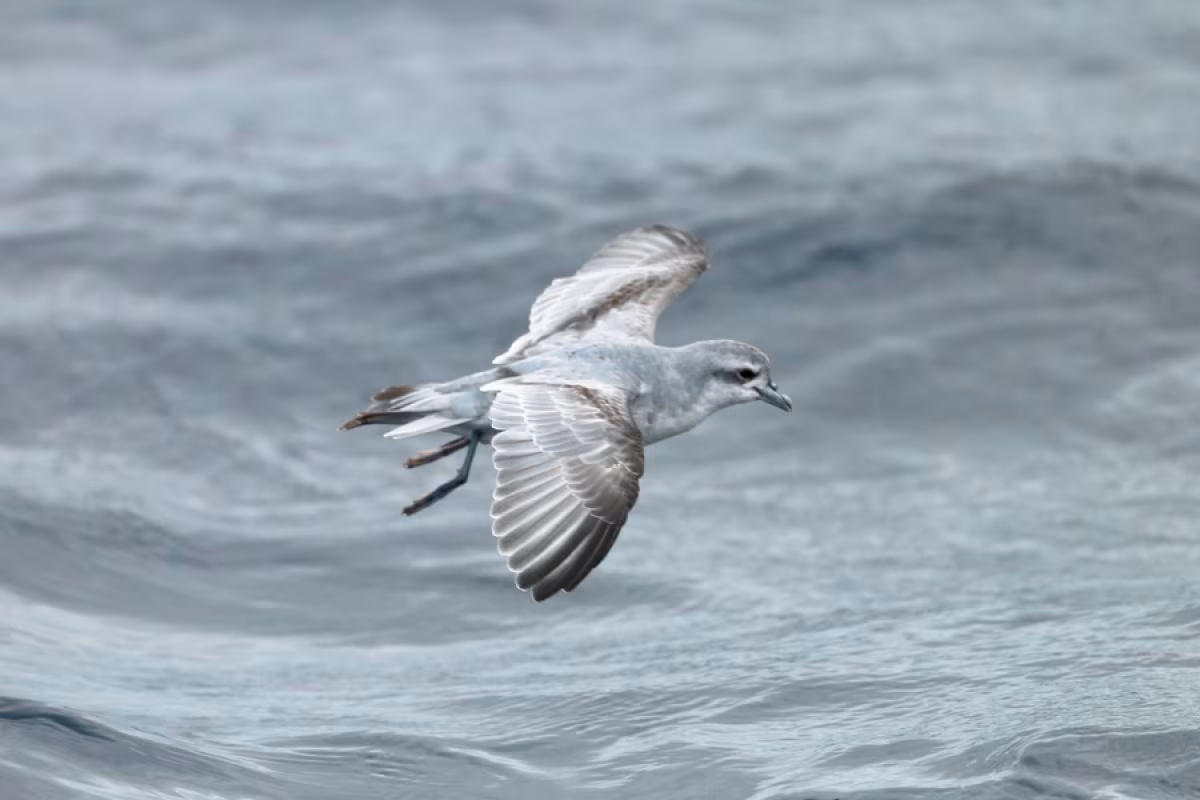
Picture by Ed Dunens [CC BY 2.0], via Wikimedia Commons
22. Rock shag
Also named cormorants, shags fall into many different species, only a few of which we regularly see. Rock shags are sometimes called Magellanic cormorants, and we tend to encounter them around the Falklands and Tierra del Fuego. They like to nest on cliffs or other such steep, rocky places.

Picture by Calyponte [CC BY 3.0], via Wikimedia Commons
23. Blue-eyed shag
As long as the ice holds out during the Antarctic summer, these seabirds will keep year-round nests, the only species to do so there. Blue-eyed shags don’t travel far from these nests, which used to make them a welcome sight to sailors hoping to spot land. Like a few other species on this list, the shag divisions are debatable: The Falklands variety are called imperial shags, and there are also South Georgia shags and Antarctic shags.

Picture by Martin van Lokven
24. Brown skua
The complex taxonomy of brown skuas is also a matter of contention among ornithologists, with some splitting this bird species into still-further divisions: subantarctic skua, Antarctic skua, Falklands skua, and Tristan skua, among others. They feed on eggs, carrion, fish, penguins, and other seabirds.

Picture by Esther Kokmeijer
25. South polar skua
These aggressive seabirds are known to attack humans who venture too close to their nests, though when not breeding south polar skuas are almost never seen on land. Being pelagic birds, they live entirely at sea, and we most often spot them around the Antarctic Peninsula, Ross Sea, and South Shetland Islands.
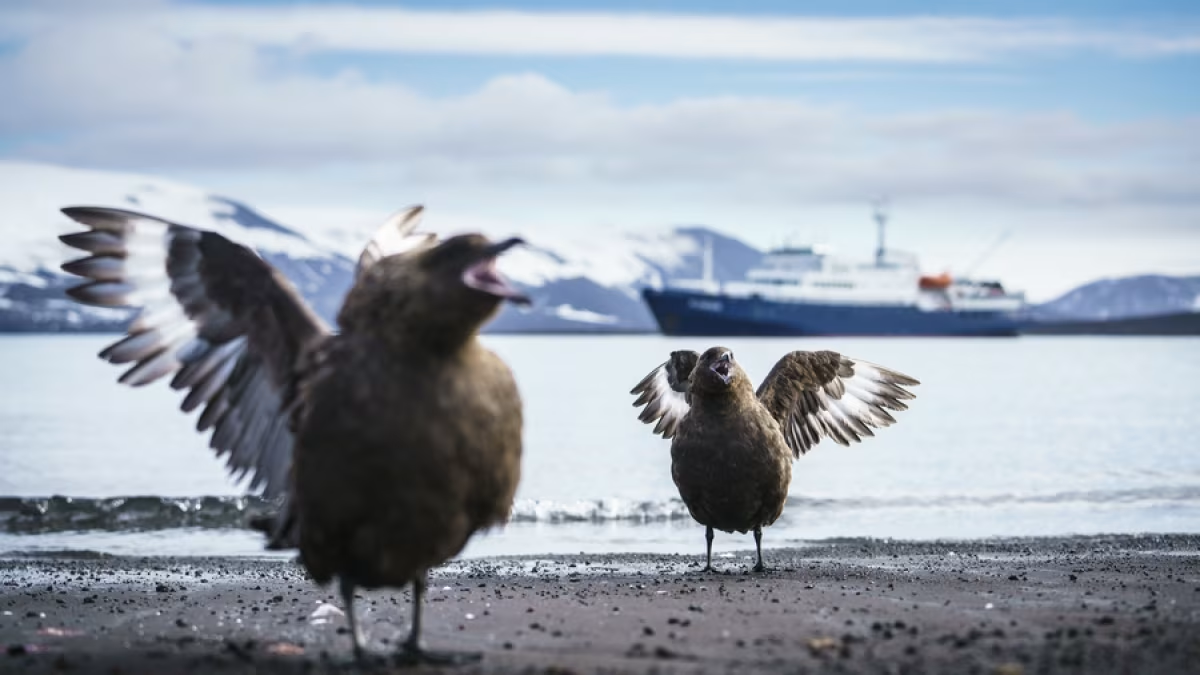
Picture by Dietmar Denger
26. Kelp gull
Carrying the additional monikers of Cape gull or Dominican gull, kelp gulls are omnivorous scavenging seabirds. Their latter name comes from their resemblance to Dominican friars, whose black-and-white habits match the plumage of these survivalist seabirds.

Picture by Andrew Shiva / Wikipedia, via Wikimedia Commons
27. Arctic tern
Due to their long migratory pattern, Arctic terns experience both the boreal (Northern Hemisphere) and austral (Southern Hemisphere) summers, getting more sunlight than any other animal on the planet. They’re known to travel up to 2.4 million km (1.49 million miles) over the course of their lives, a wanderlust impressive by even the most nomadic standards.
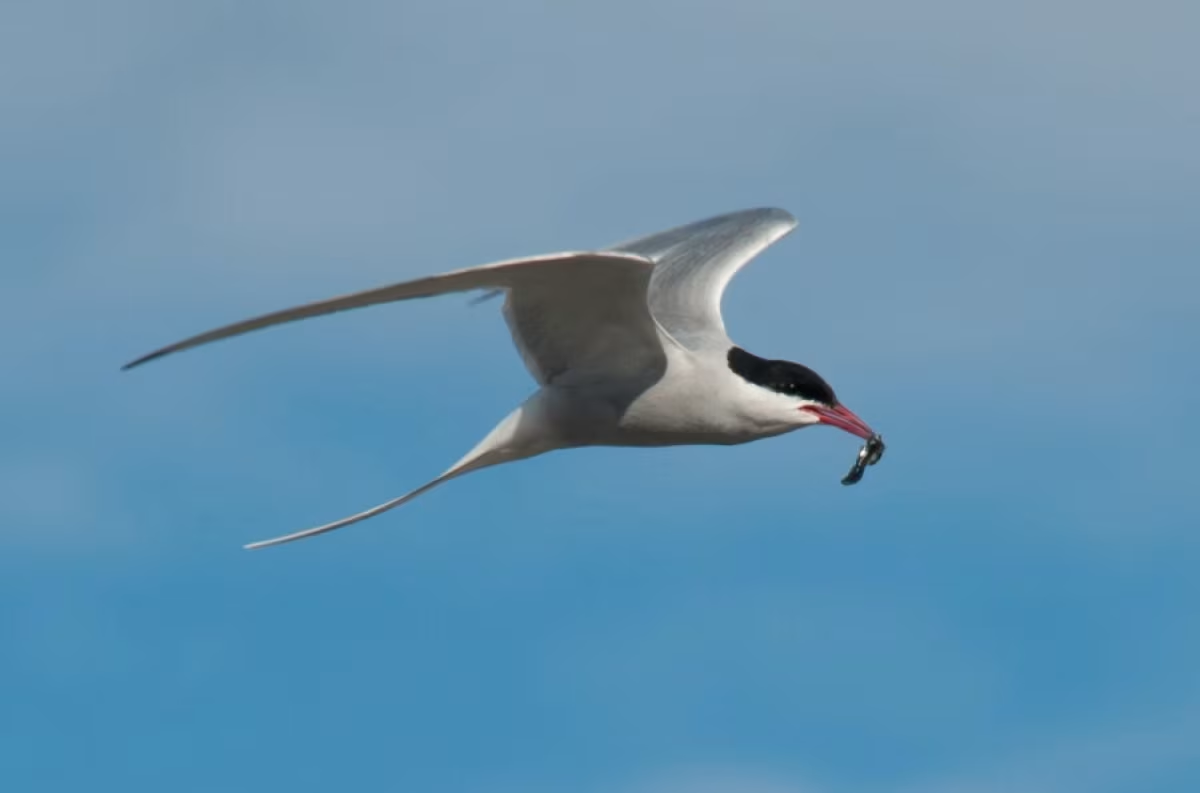
Picture by Erwin Vermeulen
28. Antarctic tern
Antarctic terns are close in appearance to Arctic terns, except that the Antarctic variety of seabirds have gray wingtips instead of black and are stockier in build. These birds are still quite small, however, being only 31 – 38 cm (12 – 15 inches) long, with skuas being the primarily predators of their chicks and eggs.
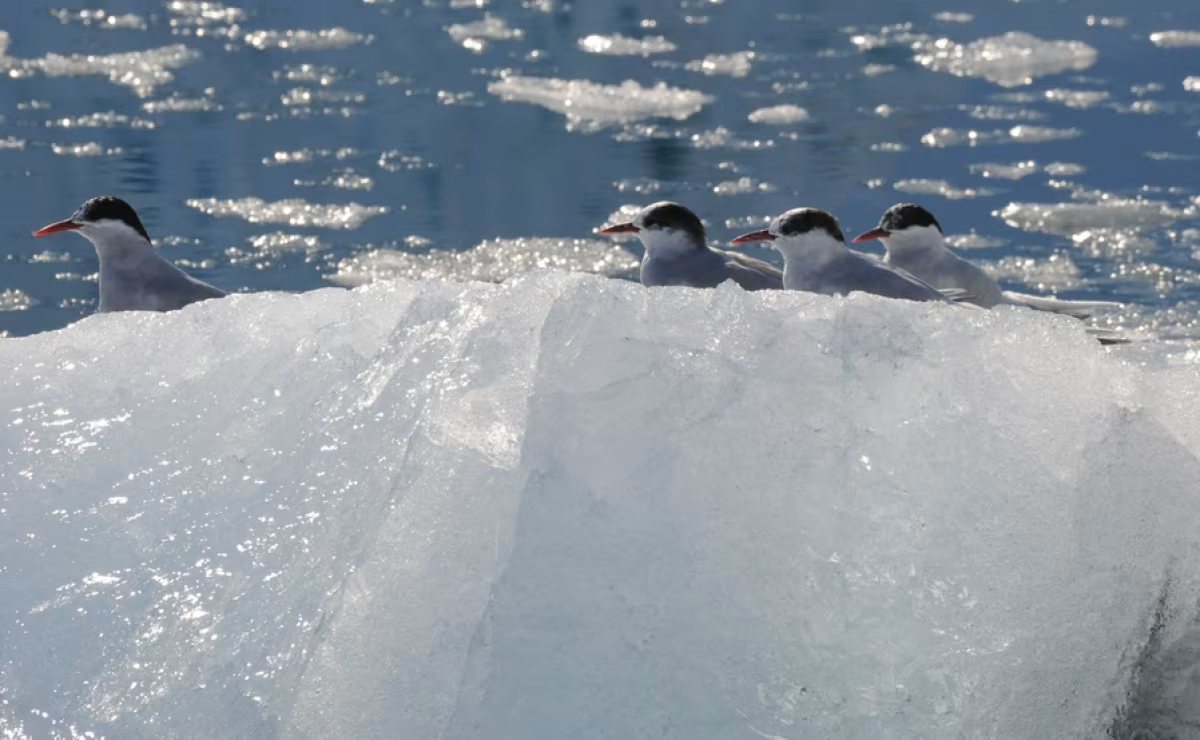
Picture by Siegfried Woldhek
29. Falkland steamer duck
These ducks are one of only two species endemic to the Falkland Islands, sharing that distinction with Cobb’s wrens. Falkland steamer ducks are often confused with flying steamer ducks, though as suggested, the former birds don’t fly. Charles Darwin wrote of them, “These clumsy, loggerheaded ducks make such a noise and splashing, that the effect is exceedingly curious.”
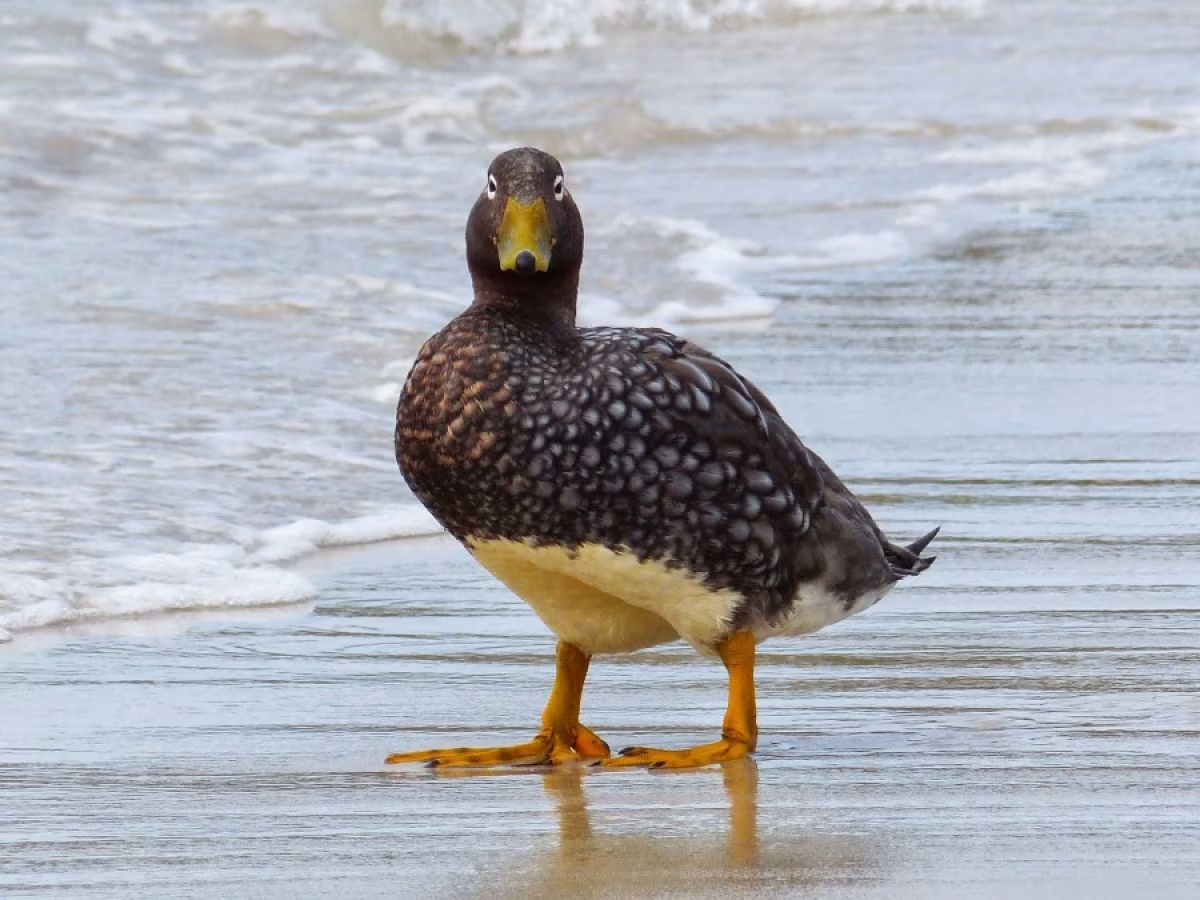
Picture by Siegfried Woldhek
30. Cobb’s wren
Cobb’s wrens were named after Arthur Cobb, a bird writer and farmer from the Falklands, and are native to that island chain. The region and population of these birds are so small, in fact, that they are often given to inbreeding, which occasionally results in albinism.
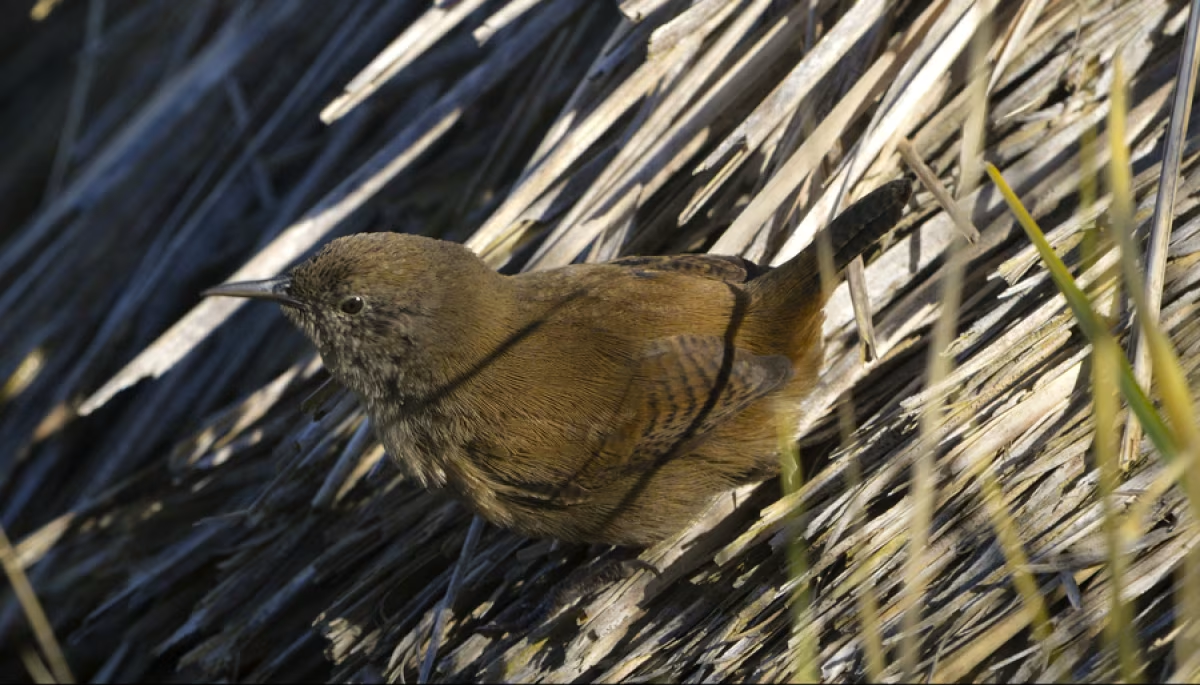
Picture by Werner Thiele Photography
31. Striated caracara
These dark-plumed raptors, also called Johnny rooks, are naturally curious and often approach humans without fear. Striated caracaras are the southernmost breeding bird of prey, one of the world’s rarest raptors, and a striking resident of the Falklands and Tierra del Fuego.
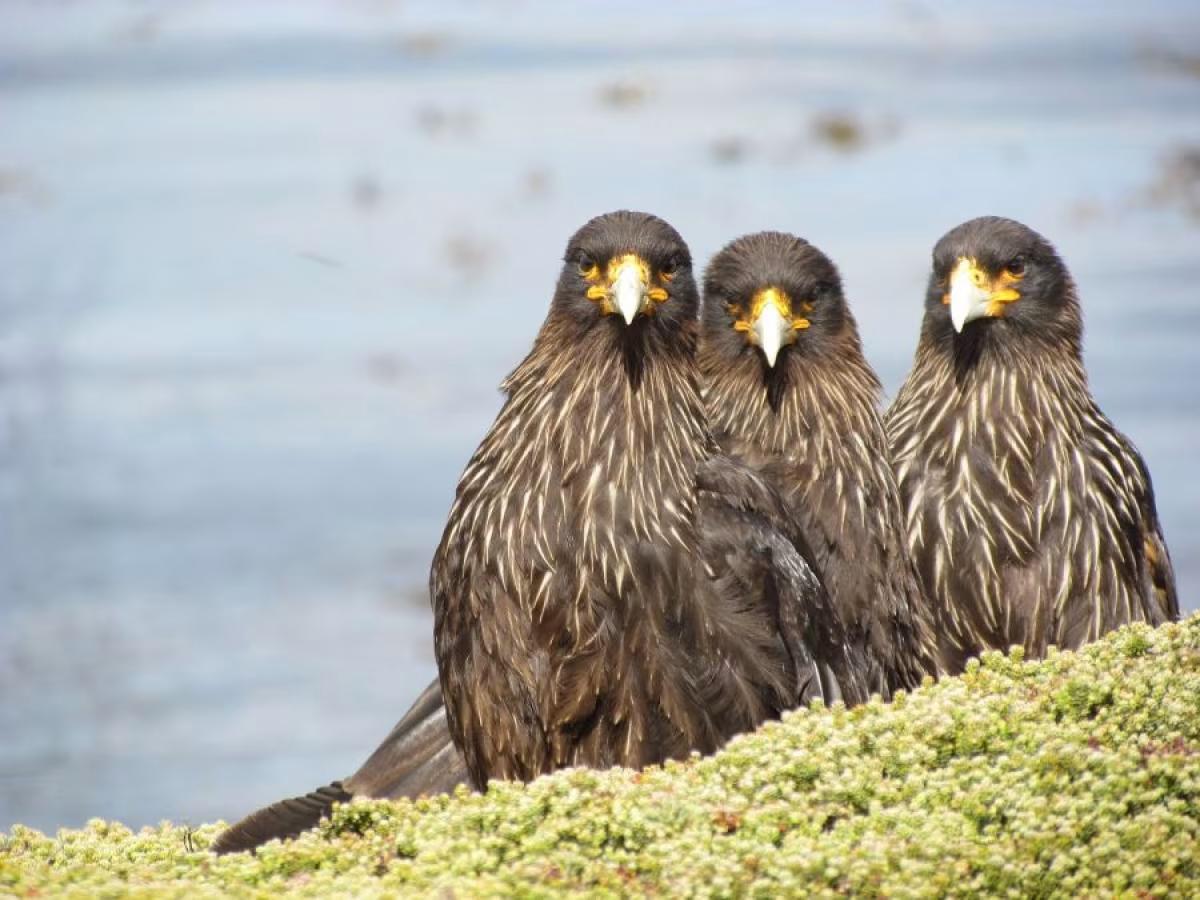
Picture by Ali Liddle
32. Dark-faced ground tyrant
Another native Falklands bird, dark-faced ground tyrants stay on the island chain all year long. They are members of Tyrannidae, the largest bird family in the Americas, and their habit of hopping up to other birds as though to relay news has earned them the nickname “news bird.”
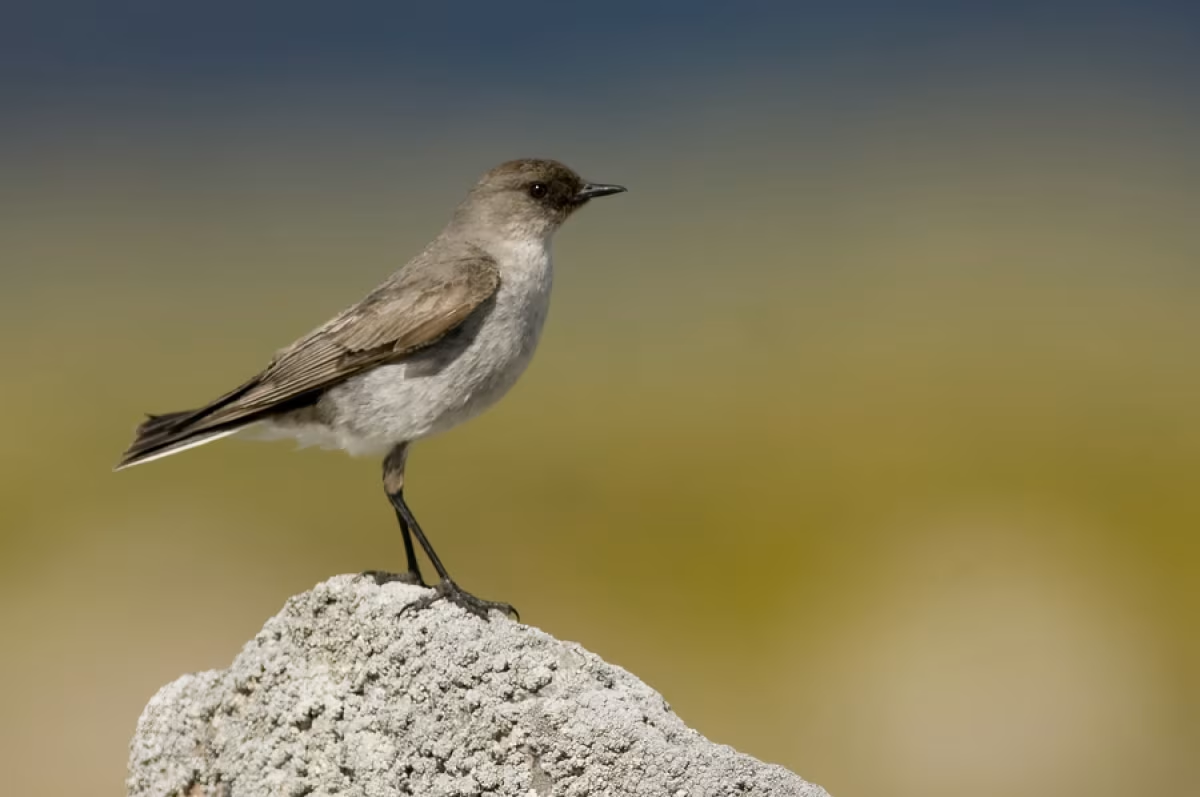
33. South Georgia pipit
South Georgia pipits have the musical distinction of being the only Antarctic songbird, making them a nicely lyrical conclusion to this list. We see these sparrow-sized non-seabirds around South Georgia, where they like to build nests out of dried tussac grass. South Georgia pipits are the island chain’s only passerine, or perching bird.
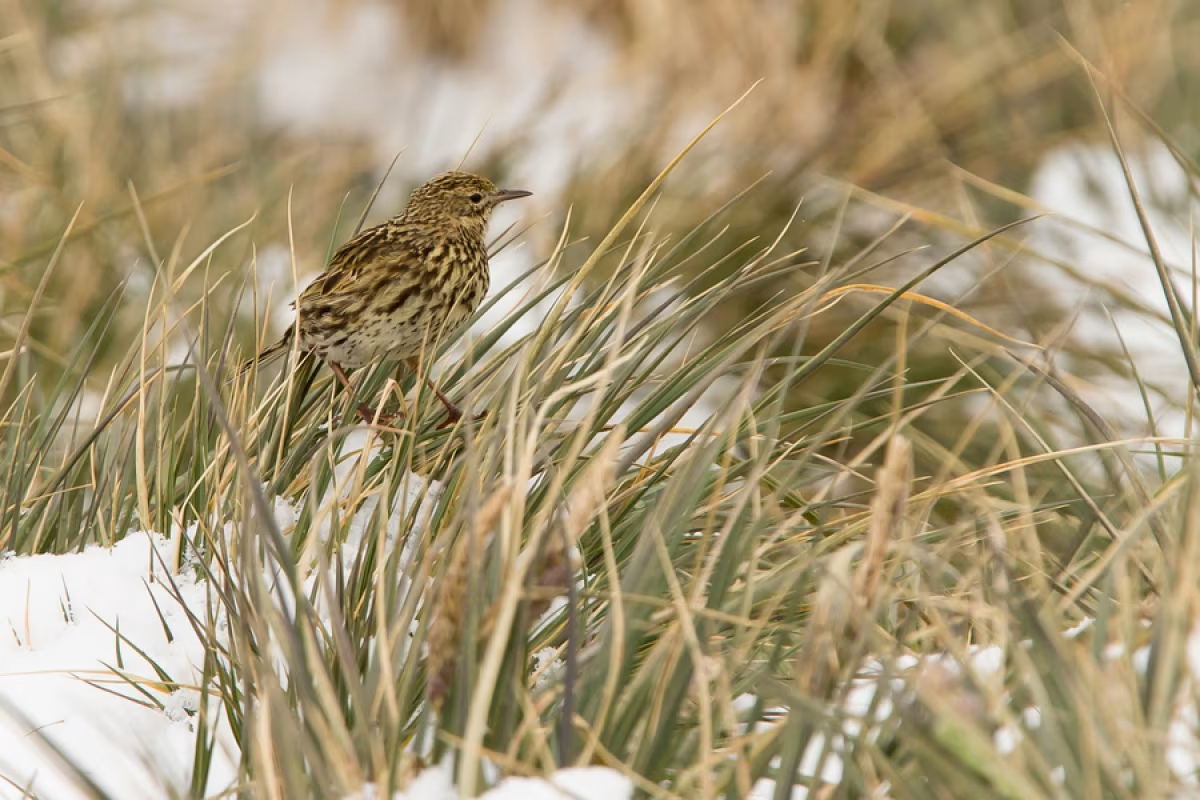
Picture by Mike Watson - BirdQuest
Antarctic birdwatching tours for Antarctic bird lovers
As these are just a few of the birds and seabirds you may encounter in Antarctica, we encourage you to come see these and many other exotic polar birds for yourself on one of our Antarctica bird-watching tours.
